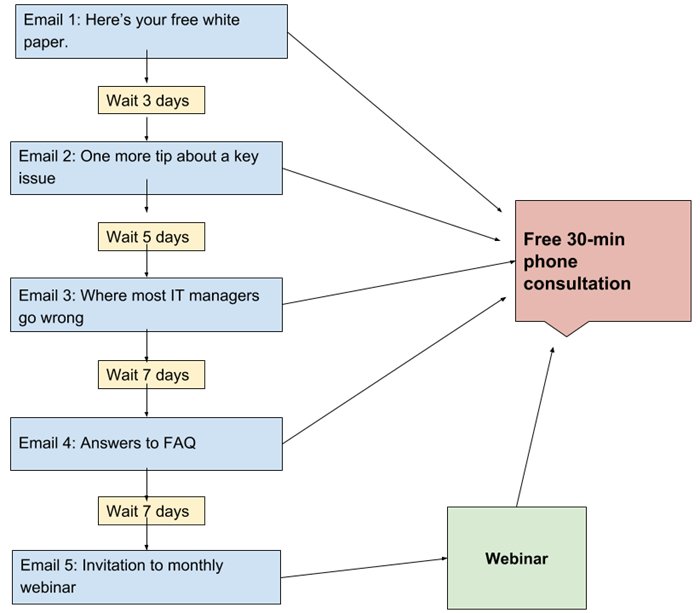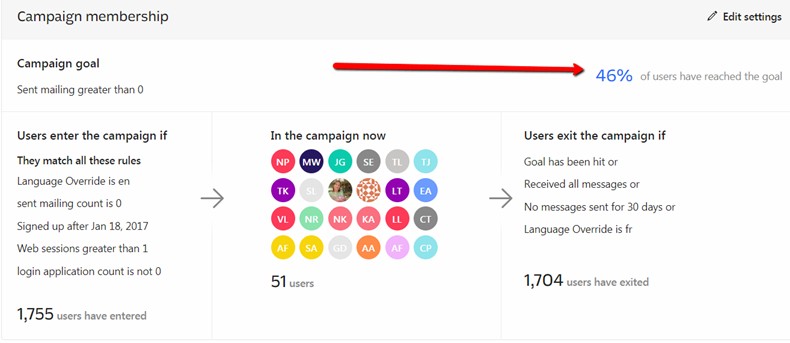You've probably heard it before: Email marketing is one of the most effective marketing channels for businesses of all sizes with a reported ROI of up to 40:1. But, at the same time, email is not magic. You can't wave a wand and suddenly double your revenue in 30 days.
So... what can you achieve with a solid email marketing strategy? What is a realistic goal for your business? What can you accomplish with your email efforts?
In this article, I'll walk you through four real-world examples of business owners who set goals and used email marketing strategically to achieve them (or at least to make significant progress toward them).
Goal 1: Increase customer loyalty
Customer loyalty means nurturing the relationship with your customer post-purchase so that you stay top of mind when it comes time for them to buy again. Basically, your goal is to increase the average value of a customer. That can be done by increasing the frequency of purchases or promoting complementary products. The most effective way to do those two things is email.
Real-world example
The owner of a store that sells craft beers notices that his customers visit his store every other month, on average. He thinks that if he were to increase that average to once a month, his bottom line would benefit significantly.
The goal: Within 6 months, I want my email subscribers to visit my store once a month, on average.
The plan: He creates a newsletter that he calls "The VIP Club." From now on, all customers who visit the store will be asked if they want to join. All VIP Club members receive exclusive content and coupons by email once or twice per month.
In the emails he sends to VIP Club members, the business owner does a good job of mixing educational content with promotional offers. For example, he shares an article called "How to Pair Food and Beer for a Truly Delicious Experience" along with a discount coupon for the beers featured in the article.
The results: After six months of sending out newsletters to his VIP customers, the owner pulls up the purchase history of all his subscribers to see how often they came in during the previous months. 1.5 visits per month! He's well on his way to reaching his customer loyalty goal.
Goal 2: Close more leads
Email is also one of the best mediums for lead nurturing—the art of communicating with prospects as they go through the different stages of the sales process.
At the beginning of their customer journey, prospects might discover your business but not be ready to purchase. However, once they are on your mailing list, you can send them relevant content, information, and promotions over time that will warm those leads and bring them closer to purchasing.
Real-world example
An IT consultancy firm offers a free whitepaper on its website. To get the whitepaper, visitors have to fill out a subscription form. When they do, they are added as leads in the firm's customer relationship management (CRM) tool. A sales rep then gets in touch with them (by phone or email) and offers a free 30-minute phone consultation that is usually followed by a quote. Looking at the numbers, the owner finds that only 5% of those leads eventually get converted to clients. Could they use email marketing to increase that number?
The goal: I want to increase the online-lead-to-client conversion from 5% to 10% within six months.
The plan: The best way to use email for lead nurturing is through an automated email sequence (also known as a drip campaign or a marketing automation scenario). Predetermined emails are sent out automatically at a predetermined pace. Here's how it works:

The results: After three months, the business owner looks at his lead-to-client funnel in his CRM tool and sees that in the previous three months, the funnel's conversion rate is 8%! It's working.
Goal 3: Improve user onboarding/engagement
Emails don't have to be just for sales or promotions, they can also be educational. Using email during the onboarding process allows you to give your clients all the resources and information they need to have a positive experience. You can send them how-to tutorial videos or walkthroughs of how to use your product or software.
Real-world example
The marketing director of a software company (that's me) notices that when new users accomplish three key actions within seven days of signing up, they are twice as likely to become paid users.
The goal: In the next 90 days, I want to increase the percentage of users who accomplish three key actions within seven days of signing up from 30% to 40%.
The plan: Prepare three tutorial videos (one for each key action) that are going to be sent by email if the key action has not been accomplished.

Three days after new users sign up for a free account, the system checks whether they have created a template. If they haven't, they receive the above email. The same process gets repeated a few days apart for the two other key actions.
The results: 90 days later, this is what the results of the "New User" campaign look like...

Fully 46% of new users have accomplished our key actions. Time to celebrate!
Goal 4: Boost one-off sales
A common use of email marketing is sending one-off, time-sensitive emails to your list during a special promotion. Even if email marketing is so much more than that, this classic tactic can still work well when done properly.
Real-world example
The owner of the craft beer store in the first example wants to boost sales with a time-sensitive offer of a particular type of product.
The goal: This month, I want to triple the sales figures for the mixology category.
The plan: Here is some of the advice I give the business owner for planning his promotional emails...
- Start your email promotion in advance to build some hype (perhaps a week or more in advance).
- Send more than one email (send reminders and a "last chance" email on the last day).
- Sprinkle some genuine urgency.
- Make sure it's relevant to your readers. (Can you segment your list and send different promotions?)
- Keep things lighthearted.
The results: In the week following the campaign, the three stores sold out of the product! The sales for this category increased 400%.
* * *
As you can see, you don't need an overly complicated email strategy to achieve success. When you have focused, relevant goals, you will start to see your ROI increase.




